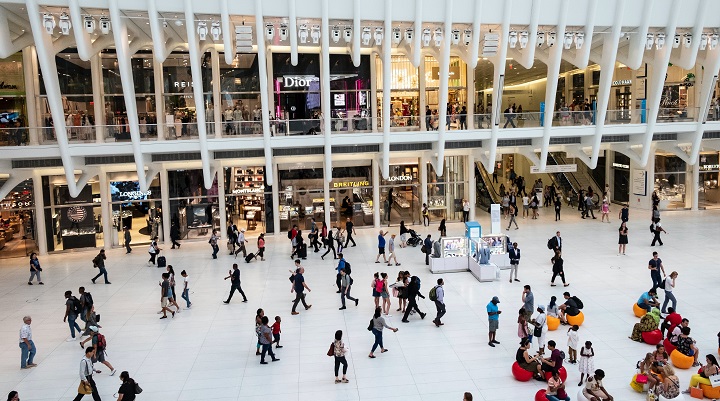Despite the mounting headwinds, Australia’s economy was a strong outperformer in 2022. The removal of restrictions on movement in the early months of the year, coupled with pent-up demand in households, formed the catalyst for a boom in household spending; monthly retail turnover rose 12.5 per cent between December 2021 and November 2022.
And while other sectors in the economy, such as construction, have continued to battle with supply-chain disruptions and adverse weather, activity has been buoyant across the board in general; we estimate that GDP expanded by around 3.8 per cent last year, with the economy growing by an estimated 6.5 per
cent since the start of the pandemic; however, the last couple of years have also brought some permanent changes.
For consumers, there is a very strong desire to get out and enjoy life. Domestic travel has fully rebounded, with 27.7 million passengers flying domestically in the three months to September 2022. Hospitality has had a resurgence as well. This has been good news for retail spending that is linked to social settings, such as clothing and shoes and department stores.
Spending on international travel remains a long way below pre-pandemic levels, and while labour and aircraft capacity remain a constraint driving high airline ticket prices, this is expected to improve over the course of the year as more of the global airline fleet comes back online.
Domestically, the household savings rate was 6.9 per cent in September 2022 only slightly above 2019 levels and well down from the 2020 high of about 24 per cent, suggesting that the amount of dry powder in consumers wallets is declining. The shift in spending towards online channels is another permanent
outcome of the pandemic, with annual events such as the Black Friday and Click Frenzy sales helping to propel end-of-season retail sales well into November, permanently changing the flow of consumers’ retail spending patterns.
Policymakers navigate a narrow path
Notwithstanding the strength of the economy in 2022, the headwinds to momentum in 2023 are clear.
The strength of the national economy and a need to bring inflation back down to the 2-3 per cent target band has prompted the Reserve Bank to raise the cash rate precipitously, to over 3 per cent from near-zero 12 months ago. The RBA is set to tighten further before pausing to allow the impact of what’s been done to flow through. The impact of higher interest rates on the housing market is apparent. Sydney has led the country’s decline, with a 13 per cent correction in prices seen in 2022. Interest rates are also putting pressure on household budgets for those with a mortgage (around a third of households), and this squeeze is set to increase as those with fixed mortgages refinance through 2023.
Consumers are also feeling the heat from the strongest inflation rates seen in over 20 years.
While price rises in early 2022 were relatively concentrated in a few categories, particularly food, fuel and the cost of residential construction, pressures have broadened to most parts of the economy and there are anecdotal reports of some consumers trading down to manage their household budgets.
Notwithstanding these drags, the return of migration – 117,000 student and temporary worker visas were processed in the first quarter of the financial year, a record high – and continued wage growth of about 3.5 per cent this year, albeit slower than headline inflation, will provide some support. Taking all this and the end of the reopening boom into account, consumer spending is set to grow by less than 2 per cent in 2023, down from over 6.5 per cent in 2022.
The picture for other parts of the economy is also a mixed bag. The war in Ukraine has had a significant impact on global commodity prices, with the manufacturing sector in Europe now contracting as a result of the increase in fuel costs. More broadly, high inflation and rising interest rates are challenging many economies, and in some cases domestic conditions have held back activity. China’s economy underperformed in 2022, but the relaxation of Covid restrictions, interest rate cuts and other stimulus to the property sector should lift momentum moving through 2023. Australia’s exporters have generally
been able to adapt over the last two years and take revenues to near-record highs. Helped by the disruption in global markets, commodity producers have found new markets in India, South Korea and Japan, while high-value manufacturers such as wine producers have pivoted into Europe.
Elsewhere, the challenge of elevated input costs and labour shortages in the construction sector should start to ease this year as conditions normalise locally and globally. It will take time, but the demand outlook for the sector remains positive. There is a solid pipeline of major infrastructure projects to complete, including the work needed for the 2032 Olympics, and demand for residential housing remains robust. The government has made providing affordable housing a key policy commitment, with the establishment of the National Housing Accord.
Australia is still set to outperform
Overall, the economy is expected to just about escape a recession, but grow by less than 2 per cent. This is below trend but given the strong performance over the last two years, in many ways it’s a welcome moderation in momentum. Firms and the labour market need time to expand capacity and catch up with demand, and during this process the RBA should be able to bring domestic inflationary pressures under control and return to the 2-3 per cent band in the medium term. This outcome will ultimately be best for the government, households and retail businesses.
This article was originally published in the 2023 Australian Retail Outlook, powered by KPMG. Download here.






